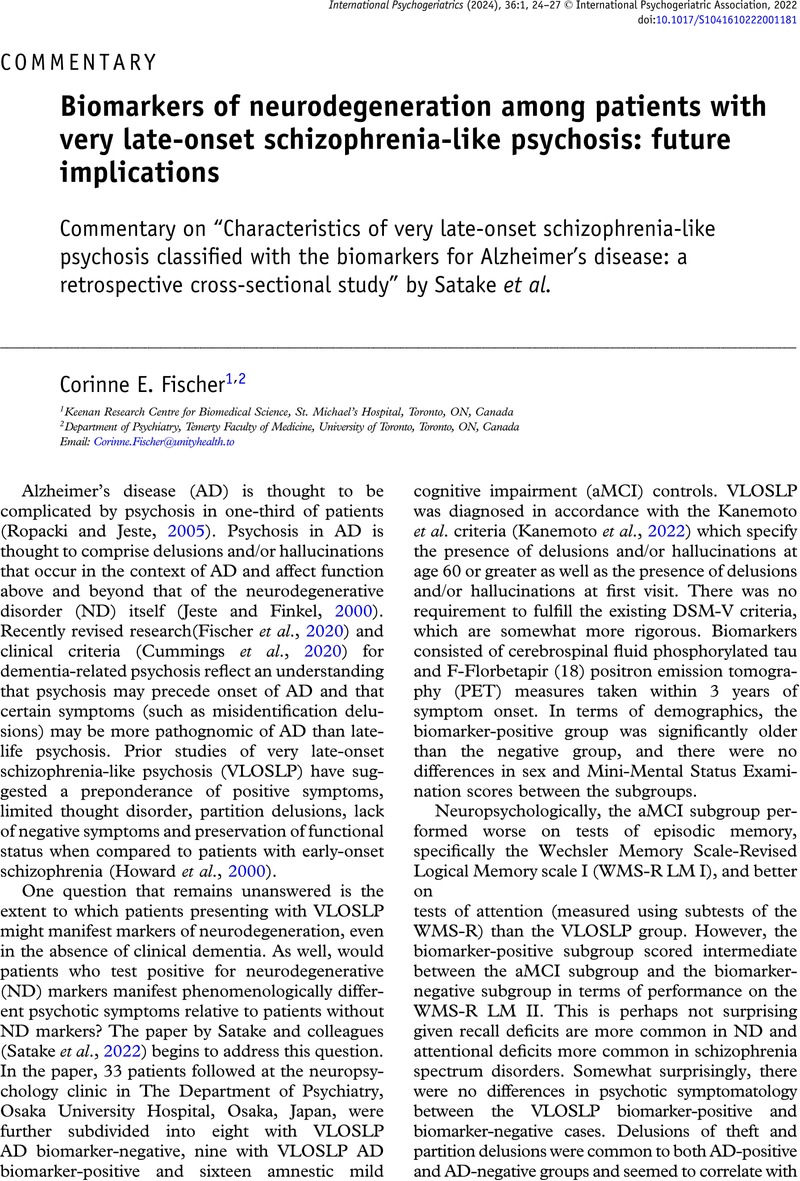No CrossRef data available.
Commentary on “Characteristics of very late-onset schizophrenia-like psychosis classified with the biomarkers for Alzheimer’s disease: a retrospective cross-sectional study” by Satake et al.
Published online by Cambridge University Press: 14 December 2022
